Have you ever found yourself spiraling down a rabbit hole of negativity, where even a minuscule mishap blossoms into a full-blown disaster, leaving you hopeless? We all have been through this, where negative thoughts quickly turn into self-fulfilling prophecies, leading to a path of destruction and even depression.
These emotions can drain your confidence and ruin your mood, leaving you distorted and disoriented. With cognitive behavioral therapy, you can opt for mental adjustment, overcoming these thinking traps.
In this post, we will be discussing the top 8 thinking errors, followed by how you can break the cycle and control your emotions. Let’s get started!
1.1 The Power of Thoughts
Thoughts are powerful. Research shows that our thinking can strongly influence our emotions and behaviors, impacting how we experience life. If we continuously think negatively, life can feel overwhelming, and we may stay trapped in cycles of anxiety and despair. But by recognizing and adjusting our thoughts, we have the power to reshape our reality.
1.2 Common Thinking Errors & How to Overcome Them
Here are the top eight thinking errors that increase negativity in life, along with techniques to counter each one.
1.2.1 All-or-Nothing Thinking
Also known as “black-and-white thinking,” this pattern involves seeing things in extremes. For instance, if you miss a promotion, you might conclude, “I’m a complete failure.” Such rigid thinking adds unnecessary stress.
Overcome it: Recognize the “gray areas” and replace absolute words like “always” or “never” with balanced thoughts. Instead of “I’ll never get promoted,” try “I missed this one, but I can improve for the next opportunity.”
1.2.2 Overgeneralization
In overgeneralization, a single event changes your outlook on everything. For example, a job rejection might lead you to think, “I’ll never get hired.”
Overcome it: Reflect on the facts, write down your thoughts, and remind yourself that one setback doesn’t define your future. Self-affirmation can help counter negative generalizations by focusing on your strengths and resilience.
1.2.3 Mental Filtering
Mental filtering involves focusing solely on the negatives. For instance, your boss praises your work but mentions a small area for improvement, and you only focus on that critique.
Overcome it: Follow the “Three Positives” rule—every time a negative thought arises, counter it with three positive details. Over time, you’ll build a habit of seeing situations more holistically.
1.2.4 Disqualifying the Positive
Similar to mental filtering, but here, you immediately dismiss positives. For example, someone praises you, and you brush it off by saying, “Anyone could do that.”
Overcome it: Acknowledge even small wins and give yourself credit. Remind yourself of your strengths and accomplishments; this shift encourages a healthier self-image.
1.2.5 Jumping to Conclusions
Jumping to conclusions involves “mind-reading” (assuming others think negatively about you) and “fortune-telling” (predicting the future).
Overcome it: Ask yourself, “What evidence do I have for this belief?” If there’s none, remind yourself that it’s just an assumption and let go of these unfounded thoughts.
1.2.6 Catastrophizing
Catastrophizing involves assuming the worst possible outcome, like thinking, “I’ll get fired if I’m late.”
Overcome it: Take a deep breath, consider realistic outcomes, and remind yourself that negative outcomes are unlikely to be as severe as you imagine.
1.2.7 Emotional Reasoning
Emotional reasoning involves believing that your feelings reflect the truth. For instance, feeling incompetent leads you to think, “I must be incompetent.”
Overcome it: Recognize that feelings are not facts. Reframe thoughts like “I feel incapable” to “I feel this way now, but I’ve succeeded before,” giving yourself the chance to see beyond temporary emotions.
1.2.8 Using “Should” Statements
Using “should” statements imposes rigid expectations, like “I should be more productive.”
Overcome it: Replace “should” with “might” or “could” to foster self-acceptance. Instead of “I should be successful,” try “I could work towards success at my own pace.” This shift encourages self-compassion and reduces pressure.
1.3 Breaking the Cycle of Negative Thinking
Negative thought patterns don’t disappear overnight, but small efforts add up. Here are some simple strategies to help reframe your mindset:
1.3.1 Practice Mindfulness
Take a few minutes each day to observe your thoughts without judgment. Write them down and note any patterns. This habit can help you become more aware of triggers and reduce spiraling into negativity.
1.3.2 Journaling for Self-Awareness
Journaling helps track recurring thoughts and feelings. Practice the “Three Positives” rule here to counter negative thoughts with positive reflections, cultivating a habit of self-awareness and gratitude.
1.3.3 Engage in Positive Activities
Engage in hobbies, exercise, or volunteer work that brings joy. Positive activities enhance self-esteem and provide a constructive outlet for stress.
1.3.4 Surround Yourself with Positivity
Surround yourself with supportive people who uplift you. Limit exposure to negative influences, whether in your environment or relationships, and seek out positivity.
1.3.5 Be Patient with Yourself
Change takes time. Celebrate small victories and recognize that progress will be gradual. Each step, no matter how small, is valuable.
1.4 Take Back Control of Your Thoughts!
Breaking free from negative thinking is a process, but every small step counts. By challenging these thoughts, they’ll have less hold over you, increasing your resilience and optimism. Cognitive behavioral therapy shows us that our thoughts influence our feelings, which shape our actions.
When you understand how and why you think in certain ways, you’re better equipped to create positive changes and regain control over your life narrative. At Cognitive Business Consulting, we’re here to help you develop the skills and insights needed to turn your thoughts into tools for growth and success.


